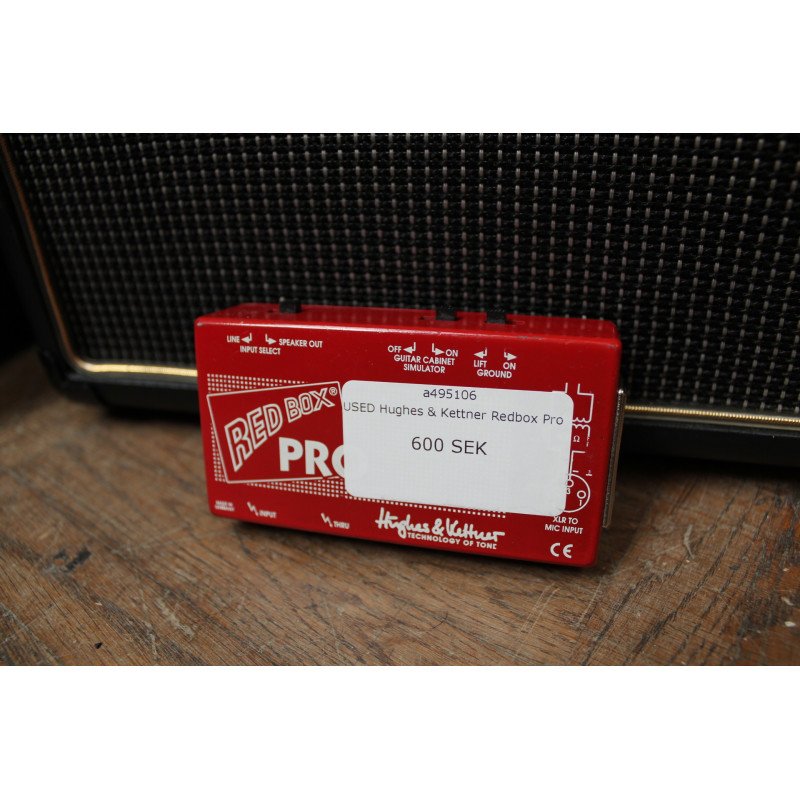
- SOLD!
USED Hughes & Kettner Redbox Pro
The original Hughes & Kettner Red Box guitar DI used active circuitry to emulate the frequency response of a typical guitar cabinet and speaker, enabling guitars to be DI'd rather than miked while still retaining the tonal qualities of the amp or preamp they were played through.
Very Good condition, 7/10, more info: The original Hughes & Kettner Red Box guitar DI used active circuitry to emulate the frequency response of a typical guitar cabinet and speaker, enabling guitars to be DI'd rather than miked while still retaining the tonal qualities of the amp or preamp they were played through. It worked very well, but now H&K have completely redesigned the unit using passive components to produce the Red Box Pro.
Housed in a red die_cast metal case, the Red Box Pro can accept inputs at line level (preamp or pedal outputs), or it may be fed from speaker_level signals. A selector switch is provided to choose between settings, as the speaker_level option requires internal attenuation to match the levels. For connection, there's an unbalanced Input jack, and there's also a Thru jack allowing you to insert the device into the signal path. The Red Box Pro has no internal dummy load, so it's important, when you're using a guitar amp, that either the original speaker or a dummy load is connected to the Thru socket especially so with valve amps, as running without a load can damage their output transformers.
A second slide switch selects between speaker simulator and a flat response, while a third switch functions as a ground lift. The output stage comprises a transformer, so input_to_output isolation is good. The passive filters used in the design have the benefit of shaping the sound, removing a lot of high_frequency source noise, such as amp hiss or digital preamp grunge. However, these filters are lossy, and the output of the Red Box is designed to feed the mic input of a mixer, where the mic amp gain can be employed to restore the signal level. Another result of the passive system is that the noise performance is similar to that of a dynamic microphone, though it is also inevitably determined by the quality of the mic amp into which it is fed.
a495106






